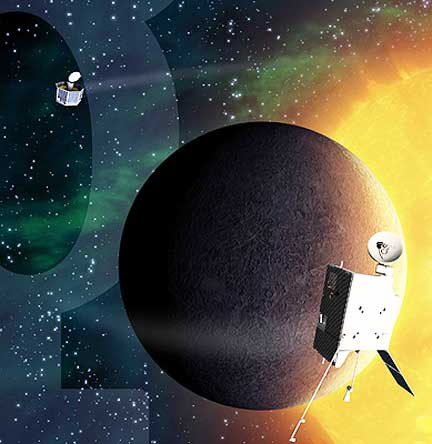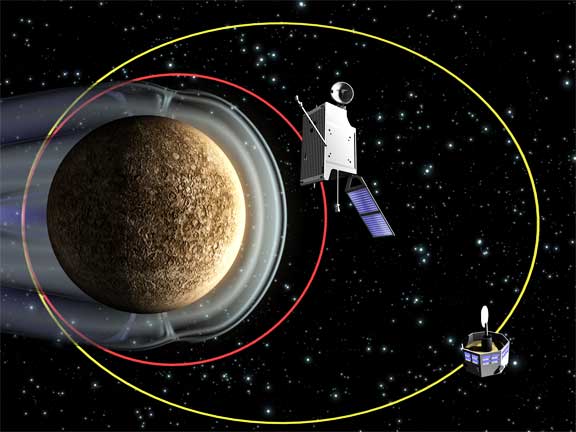
The BepiColombo mission consists of two individual orbiters: the Mercury Planetary Orbiter (MPO), that will map the planet, and the Mercury Magnetospheric Orbiter (MMO), that will investigate its magnetosphere. BepiColombo will help reveal information on the composition and history of Mercury, and the history and formation of the inner planets in general, including Earth.
Credits: EADS Astrium
...ESA’s test facilities to replicate conditions it will experience during its intense ride into space. The spacecraft will be connected to the upper stage of an Ariane 5 rocket when it blasts off from Earth in 2015. Once the upper stage and its cargo have reached orbit, the pair will separate. This is achieved via a pyrotechnic device that will fire open a clamp band, allowing springs to push the spacecraft safely away from the upper stage. The firing of the pyrotechnic device causes a mechanical shock that transmits through the spacecraft.
To ensure the components of BepiColombo will survive these shocks, and others that occur at fairing opening, rigorous assessments are being carried out at the spacecraft test facilities at ESTEC, ESA’s technical centre in Noordwijk, the Netherlands. To simulate the launch vehicle separation, the spacecraft structural and thermal test model was suspended from an overhead crane above blocks of foam rubber. Compressed gas, rather than a pyrotechnic device, opened the clamp and the launch vehicle assembly unit dropped onto the cushioned surface. Simultaneously, a number of accelerometers mounted on the spacecraft measured the effect of the shock.
Other mechanical tests to simulate the launch and voyage in space include exposing the spacecraft to the tremendous noise a rocket produces, the harsh vacuum of space, and scorching temperatures of some 450°C that the modules will endure as they orbit around the closest planet to the Sun.

This artist’s impression provides a view of the two BepiColombo spacecraft, the Mercury Planetary Orbiter (MPO) and the Mercury Magnetospheric Orbiter (MMO), in their elliptical polar orbits around Mercury. The MPO will circle the planet along an orbit ranging between 400 and 1500 kilometres above the surface. The MMO orbit ranges between 400 and 12 000 kilometres above the surface. The inclination and the eccentricity of these orbits are optimised for the study of the planet and of its magnetosphere in the very high temperature environment around Mercury.
Credits: ESA - image by C.Carreau

